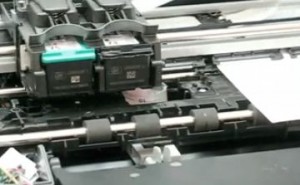When the rankings came out, alarms rang, sirens abruptly went off, and a mixture of disappointment and fear for the future diffused throughout the United States. A country of so much power, innovation, and progress, was deemed average at best when compared to other countries. How did the beautiful country of America, such an economic power in the world, whose presence is all too noticeable, fail to produce the smartest and brightest students on the planet?
In 2010, the three yearly Organisation for Economic Co-operation and Development (OECD) Programme for International Student Assessment (PISA) report compared the knowledge and skills of 15 year olds in seventy different countries and discovered that the US ranked 14th out of 34 in reading, 17th for science, and 25th (below average) for math.
These rankings caused a bit of panic and demonstrated to the world that we aren’t a superhero country after all – our education system needs reform. Speaking of our education system, the US was one out of the total 50 countries tested by the Economic Intelligence Unit (EIU), which examined the various different education system. It combines international test results and data such as literacy rates and graduation rates between 2006 and 2010. US’s education system ranked a lower 17th out of 50. It’s not surprising that such call for reform has been heard multiple times.
It all stems back from culture. What the EIU found was that the countries with a higher ranked education system (those in Japan, Singapore, and the Scandinavian countries for example) regarded the teaching profession as something more prestigious than that of the United States, where teachers are actually on average students in the bottom third of their graduating class here.
These tests and ranking systems then, are more than just a function of scores and numbers, but something with deeper roots at the depth of the issue.
So when the United States is getting ranked so lowly in reading, math, and science, we must wonder what is at the root of the problem. Interestingly enough, this is where the issue of education equity kicks in. We cannot take the surface number rankings as what they are. According to the Stanford Graduate School of Education and the Economic Policy Institute, the socioeconomic status of the students in the United States is skewing our international rankings. The authors and researchers of this study at Stanford found that the low score on the PISA is due in part because of the greater amount of US students who are from disadvantaged backgrounds or who do not speak English as a first language. With that part of the population taking the international exams, their performance weighs down the US ranking simply because the US has the most disadvantaged social class groups.
Carnoy and Rothstein, the researchers of this study, then calculated how the rankings would have changed is the social class composition was similar to that of the top-ranking nations. They found that the US would rise to sixth from 14th in reading and from 13th from 25th in math.
So why do we have such a low ranking? Well some of it may be due to the lack of a good education culture where we don’t respect the profession of teaching as much, but there’s a good sizeable chunk that lowers our ranking because of the stratification of upper and lower class. The divide is so strong in the United States, more so than many other countries, and it’s reflecting in our numbers and rankings.
How much weight should we be putting on international rankings and test scores that compare the United States to the other countries? Should a test score hold as much weight as it sometimes receives? Is it a good representative of where the United States stands in terms of educational progress and status?
http://www.ibtimes.com/us-17th-global-education-ranking-finland-south-korea-claim-top-spots-901538

















